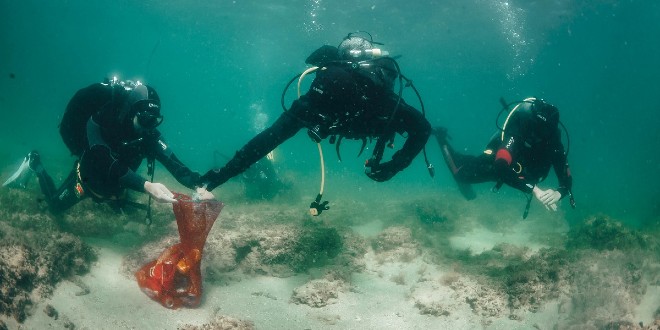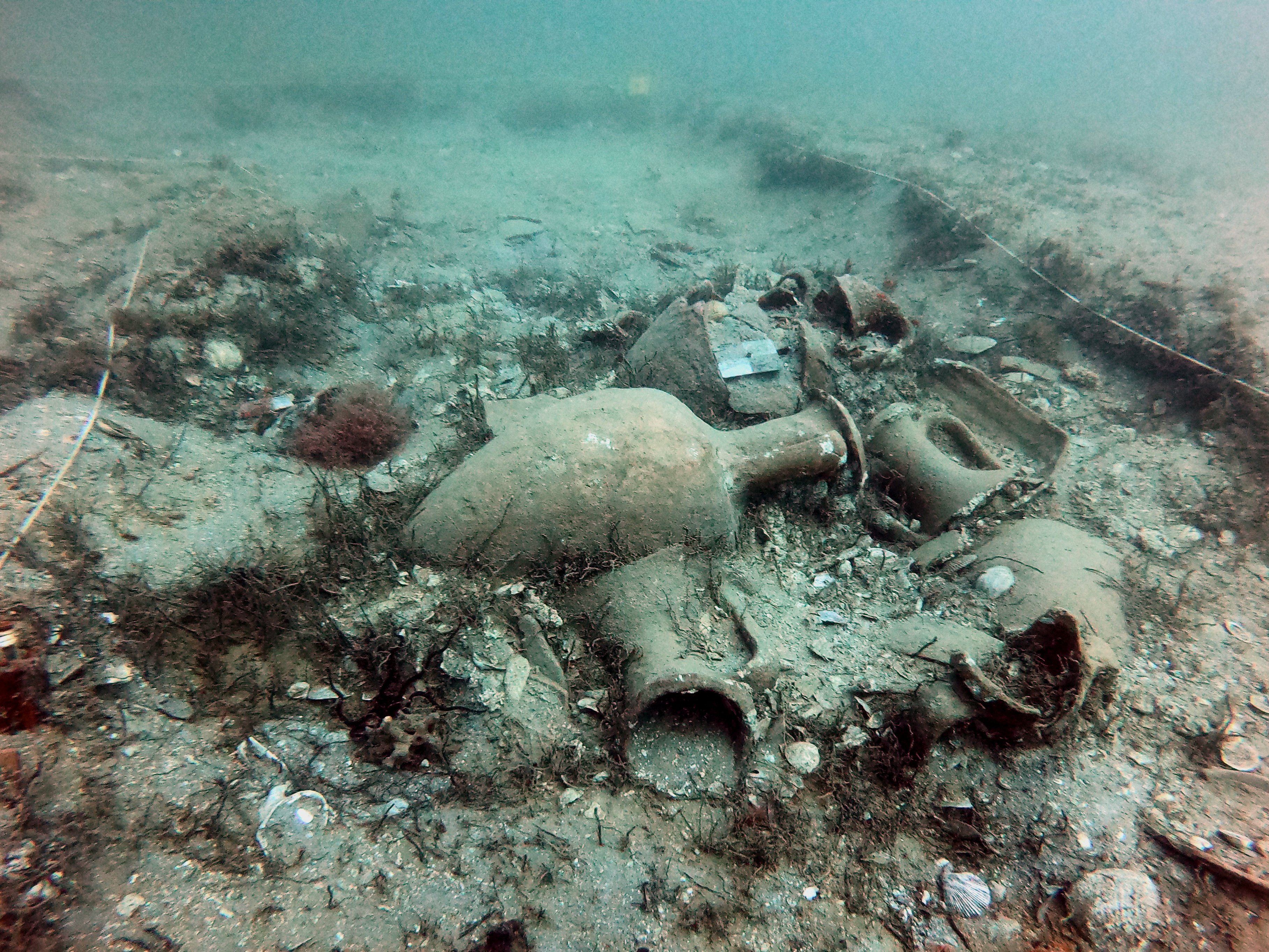On Sunday 29 August at 6 pm, in the Lido Room of the Grand Hotel Astoria in Grado, the meeting "Underwatermuse Project. The submerged heritage between enhancement and accessibility: the Grado 2 wreck”, an important opportunity to listen to the archaeologists and the institutions involved about the work in progress and the many research and enhancement activities "in situ" of the Roman Grado 2 boat wreck, with its load of wine amphorae, shipwrecked off the island between the 3rd and 2nd centuries BC
Speakers: Simonetta Bonomi (Superintendent SABAP-FVG), Anna Del Bianco (Director ERPAC-FVG), Rita Auriemma (University of Salento), Carlo Beltrame and Elisa Costa (Ca 'Foscari University of Venice), Massimo Capulli (University of Udine), Dario Gaddi (Archeotest), Claudia Pizzinato (Informest).
Promoted by the Municipality of Grado through the URP Tourism Service, the meeting - which will also be broadcast live on the Facebook page of the Municipality - will take place in compliance with current government and regional health regulations and to participate, reservations will be required by calling 0431/898239 from Monday to Friday from 10 to 12 or by sending an email to turismo@comunegrado.it . Admission will be free subject to availability.
More about it.
A few days ago, the search, protection and enhancement of the wreck of a Roman boat off the coast of Grado, known as "Grado 2", began. This is one of the three pilot interventions of the "UnderwaterMuse" project, approved and funded under the Cross-border Cooperation Program - Interreg Italy-Croatia 2014 - 2020, led by the Regional Body for Cultural Heritage of Friuli Venezia
Giulia - ERPAC FVG, in partnership with the University of Venice Ca 'Foscari, the Puglia Region, the RERA - Split Agency and the Municipality of Kaštela.
The project aims to promote and enhance the underwater archaeological heritage of some areas of the Adriatic, through the design of underwater archaeological parks / trails and the creation of innovative digital solutions for its use, such as virtual and augmented reality. Actions to raise awareness and involve local actors, as well as the training of underwater guides, have been underway for some time, also for increased accessibility. A public, geo-referenced web portal was also created, available to communities and tourists, for the virtual exploration of submerged archaeological sites through voice and text information, images and animations (www.italy-croatia.eu/web/underwatermuse ).
The Grado 2 wreck is located at a depth of 19 meters, covered by a few centimetres of sandy bottom. It was discovered on March 17, 2000 and in the same year an initial investigation was conducted by the Superintendency, with a team from the University of Catania. The amphorae of the cargo belong, according to the few intact and fragmentary specimens recovered, to a family of containers used for the transport of wine and known as "ancient Greek-Italic amphorae", produced between the 4th and 3rd centuries BC. in southern Tuscany, Lazio, southern Italy, Sicily and on the Adriatic side of the peninsula. The chronology of the containers, second half of the third century BC, is extremely interesting: it would be the oldest cargo of amphorae in the north-central Adriatic, moreover prior to the foundation of the colony of Aquileia (181 BC).
Where did the ship carrying these amphorae come from and where was it headed? To date we do not have sufficient elements to say this. However, we know that similar amphorae were numerous in the large Etruscan emporiums located in the Po delta, such as Adria (from which the Adriatic takes its name) and Spina, and were produced along the Romagna coast, in Cattolica. The presence of a ship loaded with Greek-Italic amphorae, perhaps produced in the upper Adriatic and therefore containing local wine, could be another sign of the advance of Rome towards the east (which had already founded the colonies of Rimini in 268 BC and Brindisi in 244 BC), for the exploitation of the fertile agricultural territories of this side and the control of the routes to the East. During two further campaigns between 2012 and 2015, conducted by the Superintendency with a team from the University of Udine, a first modular metal structure (frame and removable grids) was put in place to protect the wreck and allow direct use.
The goal of the UnderwaterMuse project is to remove the eight grids already positioned, highlight the entire reservoir, document it accurately, reposition the existing grids and add more, identical ones, to cover it completely, thus ensuring its protection and accessibility by divers, through agreements with "diving centres" and diving clubs, as is already the case in neighbouring Croatia. The creation of the 3D model will also allow those who cannot or do not want to immerse themselves to enjoy this outstanding submerged heritage, through the narrative and communicative use of virtual reality.
Thanks to a specific collaboration agreement, ERPAC FVG first formalized relations with the competent regional offices of the Ministry of Culture, the Regional Secretariat and the Superintendency. Then, with the help of the Informest regional agency, was able to design and start the complex organization of an underwater construction site that has various peculiarities, thanks to the fruitful collaboration between the various bodies involved: the Superintendence of Archaeology, Fine Arts and Landscape of Friuli Venezia Giulia, which is in charge of the works; the Port Authority, the Maritime District Office of Grado and Compamare Monfalcone, which followed the regulatory aspects; the Universities of Venice Ca 'Foscari (project partner), Udine and Salento, which guarantee scientific advice, the Regional Museum Management, which makes the premises of the Museo di Grado available for data processing and laboratory; the Municipality of Grado. It was in fact necessary to reconcile the needs related to purely technical underwater activities, such as the movement and expansion of the protection grids, with the scientific ones, which include the cleaning of the reservoir, to establish its extension and consistency, and its documentation. complete also through the photogrammetric survey for the realization of a 3D model.
The works make use of the technical-logistical support of an "ATI" made up of the companies Archeotest, Essetre and Marine Innovation Tech.
All the news, information and updates can be followed through the official pages of the UnderwaterMuse Project: www.italy-croatia.eu/web/underwatermuse and
www.facebook.com/Project-UnderwaterMuse-106106884192806/
-------------------------


